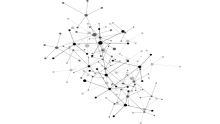How can HR technology improve HiPo development?
HiPo Week Read similar articles

Across the globe, HiPo programs today find an increased applicability. As business become more competitive, vying for greater returns by leveraging newer technologies, CEOs across the globe have grown more wary of their growing talent needs; an internal void that HiPO program have come to fill to a very large extent. And it is a program that has both HR professionals and managers happy.
A holistic HiPo program looks at identifying, developing and retaining of high potential employees. Given that most HiPo programs are meant to specific to organizations, depending on the dynamics of their respective talent problems, the overall maturity of HiPo programs still remains a question today. But for HR professionals, who understand the relevance of talent differentiation, getting it right is the key to deriving the benefits from leadership, growth, and innovation perspective. One of the ways to ensure the efficiency of such programs is to embed nuanced software and programs that make it easier for HR professionals to monitor and drive change.
A way to properly understand this is to see how technological advancements and its increased application towards developing HR technology can help HR professionals improve HiPo programs. Let us look at how the key pillars of any HiPo program can be improved. These pillars are:-
Identifying the right HiPo talent
The first step to creating the right HiPo program is often its most critical part. As most of these programs take in significant investments, ensuring the right employees are selected, plays an important role in ensuring the overall impact of such programs. Identifying the right talent becomes the important part to get right. Technology can effectively be deployed at this stage to ensure an accurate study of the individual's capability like leadership potential, strategic vision and the ability to motivate others. Using simulation-based assessments, HR managers now have more efficient tools to gauge both quantitative and qualitative aspects of their candidates. With many reports stating the high cost some companies often face by choosing the wrong candidates as their HiPo employees, or HiPos, deploying HR technology, with discretion, would also help the HR department become more cost effective with their programs. Ericson, for example have a five-month screening process to identify HiPos, they used an internal talent council to do the 1st level of screening, followed by talent boards to go deeper in each candidate and finally followed by an assessment center to validate the competencies with each candidate. HR Technology today plays an important role in ensuring all those steps (which is similar to what should be the ideal level of attention given towards identifying the right candidates), function smoothly and efficiently.
Building the right skillsets
Building the right skillsets is major focus area within the designing and execution of the HiPo program. It is the stage where the overall business vision is broken down into what translates into the gap in skillsets that the HiPo development programs need to bridge. This is also the area where successfully deploying a centralized learning and development system would help the HR managers in increasing the program's overall efficiency in meeting talent and succession demands of the company. By gaining economies of scale, a transition to a digital, mobile friendly, cloud-enabled learning system would help HR managers better control the variables in the often complicated equation of successfully executing an impactful learning program. By enabling gamification of learning modules, technology can be a vital asset. Incorporating concepts like experiential, bite-sized learning would help learning technology have a far greater impact on HiPos by allowing them to gain on-the-job training opportunities that enable top performers to build competencies and learn from experiences
Managing and retaining HiPos
Most HiPo programs are tailor made to meet the talent demands within the organization. Especially when it comes to succession planning. But according to Global CEB report, almost 64% of HiPos interviewed say that they are dissatisfied with their development experiences, and over two-thirds of HIPO programs (69%) have failed to build a strong pipeline of leaders to take over from their firm’s current crop. As more HR professionals resort to accelerate talent development of their high performers, both engagement and charting the right career development plan becomes important. HR needs to work closely with managers to create a fluid system which helps create individual development plans for such high performers. This system can help both the organization and the HiPo alike. Basing such development plans on the psychometric assessments to gauge the right direction one's development can greatly increase the chances of developing the right talent to meet the company’s often diverse talent demands.
According to the State of Psychometric Assessments in India, Willis Towers Watson: "At its most basic, psychometric assessment is the science of applied psychology which is intended to identify specific personality traits that could highlight the suitability for specific roles. These can be in the form of personality questionnaires, leadership tests, motivation tests and situational judgment tests". Although psychometric tests have been around for quite some time, its application remains sparse. Beyond the recruitment function of HR, most other functions fall behind while leveraging psychometric assessments. With modern technology improving the accuracy of psychometric assessments it becomes a vital component in not just ensuring a ‘best fit’ for an HiPo during succession planning, but also has multiple benefits when it comes to identifying and developing talent as well.
Thus by strategically embedding technology across the various components of a HiPo program greatly benefits both the HR and managers to drive better results and build the right talent force to meet the organizations' future needs.







